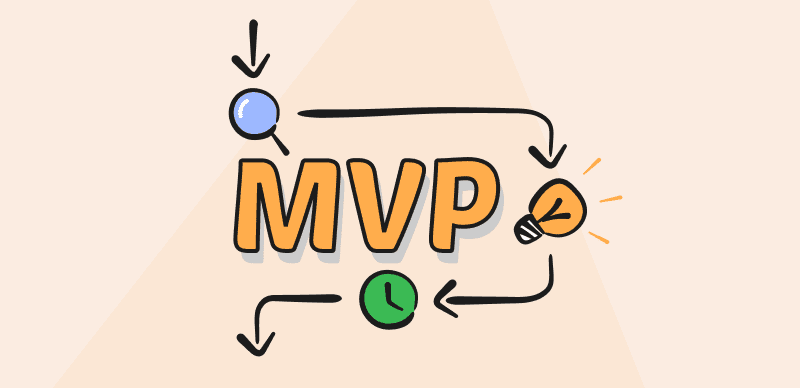Balance Between Product Vision And Users Feedback
Hey all, this is Morgan. ![]()
In my previous post, I shared what I learned from my users after talking to them. Indeed, user feedback is essential for product development, but it can also be challenging to manage and prioritize, as sometimes the feedback could not fit the product vision.

Balance Between Product Vision And Users Feedback
There is a delicate balance between trusting your product vision and listening to your users, and mastering this middle ground is the key to your business’s success. How do you balance user feedback with your vision and goals for the product? How does this feedback align with the vision? I’d like to have a discussion with you on it based on what I learned about dealing with feedback.
Table of Contents: hide
Why You Should Find a Balance between User Feedback and Product Vision
How to Assess User Feedback and Align them with Product Vision
What Is Product Vision?
A product vision represents the essence and long-term mission of a product, it’s about what you would like the company to be in the future. It includes the product’s target customers, differentiating factors, key benefits, and more. It could be updated over time as your product develops.
For Gemoo, the long-term vision is: To empower everyone to communicate and collaborate efficiently, in their own and diverse ways, to embrace infinite possibilities. 🚩
Why You Should Find a Balance between User Feedback and Product Vision
User feedback is essential for understanding the needs and preferences of your target audience. It can help you identify areas for improvement and make informed decisions about product development.
However, not all user feedback is equally important or relevant for your product development, taking every single piece of feedback and advice that users give you will result in a mix of ideas, use cases, and preferences that will leave prospective customers confused and overwhelmed. Moreover, relying solely on user feedback can lead to a product that is too focused on meeting the needs of a specific group of users, potentially limiting its appeal to a wider audience.
On the other hand, having a strong product vision is important for creating a unique and compelling product that stands out in the market, it defines who you are. Without a clear vision, you risk losing focus and direction and may end up making changes that don’t align with your overall strategy. However, without considering user feedback, a product may not meet the needs of its intended audience, leading to poor adoption. 🎯
Therefore, finding a balance between user feedback and product vision is crucial for creating a successful product. By aligning user feedback with the product development process, you can ensure that the product meets the needs of its target audience while still maintaining a strong product vision that sets it apart from competitors.
An optimal way is to listen to your users but only prioritize what aligns with your vision, and don’t let them dictate your product decisions. What you should do is assess feedback based on your vision. In this way, all feedback you receive should be viewed through the lens of your vision to ensure you push meaningful updates to your product rather than creating confusion and technical debt through some unnecessary improvements. 🚀
How to Assess User Feedback and Align them with Product Vision
No matter where this feedback comes from, it’s important to know how this feedback aligns with your product’s vision and scope. Your users are likely to have many pain points, and your product can’t and needn’t solve all of them. Identify common pain points, and filter out noise. It’s about finding a balance between user needs and staying true to the product’s core purpose. 👨💻
The urgency, frequency, complexity, and severity of the user feedback should be considered, as well as the feasibility and alignment of the suggested changes. For instance, will your product be more usable and stable if the suggested feature is added? Is the added feature fit for all or just a small group of users?
Put this in my case, I didn’t take all feature requests from my users. One of my users requested advanced video edit features. I can totally understand his concern from his use cases, and I can feel its importance in the field of video recording. However, there is a gap between his feedback and my vision for Gemoo. What I want Gemoo to be is a place where people organize and manage their content, rather than just a toolset for content creation. Therefore, I see advanced video editing as an add-on feature instead of a fundamental one, which means I possibly won’t prioritize it at this stage. 📝
On the opposite, I got a request for a download option from many users, and it’s the top one among all feature requests, which means it fits most of my users, and this will improve the usability of my product. As a result, I put this as my top priority and it was added last month.
Please ask yourself 3 questions after you receive any feedback:
- Who is this user? Is he/she active? How often did he/she use the product? Is he/she a paid user? This question will help you to assess the importance of this feedback, and how real it could be.
- How does it fit? Is this request fit for all or just a niche group? Which user segment will it affect? Don’t take it if the feedback is too personal or only fits a narrow group.
- How else can it be solved? Are there any other solutions for the raised issue except for the suggested one? Define how (specifically) implementing the feedback will make something better or easier for users.
Following those questions helps me to filter out the noise and stay focused on feedback that is truly important and delivers value. This ensures as much as possible that any changes made to the product are aligned with both its current vision and the needs of its users.
The way of finding the balance could be flexible, and I’m also learning and trying from practice, even some mistakes. Please feel free to correct me if I’m wrong, and I’d like to know your thoughts on this as well, drop me a message via MorganKung7.



